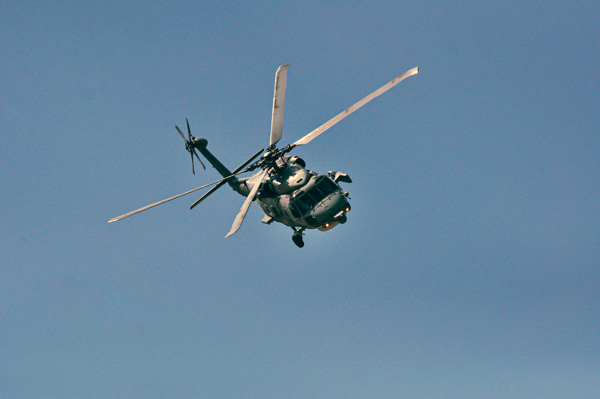Six dead in NYC helicopter crash

[Photo of a helicopter. Photo Credit to Unslpash]
A helicopter carrying a Spanish family and an American pilot crashed into the Hudson River on Thursday, April 10, 2025, killing all six passengers on board the aircraft.
The aircraft plummeted just 15 minutes after departing from the Wall Street Heliport.
Authorities report the Bell 206 helicopter lost both its main and tail rotors during flight.
It landed upside-down in five-foot-deep water near Jersey City, New Jersey.
The crash claimed the lives of Siemens executive Agustin Escobar, his wife Merce Camprubi Montal, and their three children.
Their children were only 4, 8, and 10 years old.
The 36-year-old pilot, Sean Johnson, also died.
Divers recovered the wreckage missing essential parts like the rotors and tail section.
The National Transportation Safety Board (NTSB) is leading the investigation.
Recovery crews have pulled the engine and major components for inspection.
Efforts are ongoing to retrieve smaller debris fragments.
Officials have appealed to the public to share any photos or videos they may have taken of the crash.
This crash has renewed public concern about helicopter safety in urban areas.
Local officials have long criticized the dense air traffic over the Hudson River.
Some are now calling for more restrictions on tourist helicopter routes.
This tragedy echoes the 2020 crash in Calabasas, California, that killed Kobe Bryant.
Bryant, his daughter Gianna, and seven others died when their helicopter crashed into a hillside in foggy weather.
Investigators concluded the crash was caused by pilot error and poor visibility.
The crash shocked the world and prompted discussions about the risks of private helicopter travel.
Helicopters provide speed and access, but that comes with danger.
The recent crash in New York is not an isolated event.
In South Korea, two helicopters crashed while combating wildfires.
On March 26, 2025, a helicopter in Uiseong fell during strong winds, killing a 70-year-old pilot.
The aircraft was over 40 years old.
Just days later, another pilot died in Daegu during firefighting operations.
In both cases, the helicopters were being used by local governments for firefighting.
These successive incidents have raised concerns about outdated equipment and safety protocols.
Experts calling for stricter regulatory standards and increased oversight.
They recommend retiring old aircraft and improving training.
Increased use of helicopters for tourism and emergency response adds urgency.
Without reforms, more tragedies are likely.
As investigations continue in New York, families and officials wait for answers.
The public expects transparency and changes that prevent future crashes.
Memories of previous accidents remain vivid.
The helicopter that killed Kobe Bryant was not equipped with terrain awareness systems.
Critics argue such features should be required.
Meanwhile, in Korea, officials face mounting pressure to replace old fleets and invest in safer alternatives.
Although separated by continents, these incidents share a common thread: avoidable loss.
If safety measures do not keep up with growing demand, more lives may be lost.
The tragedy on the Hudson River is the latest reminder that when aircraft fail, the results are deadly.
Better oversight, better technology, and better decisions are not optional.
They are essential.
The NTSB said the Bell 206 was on its sixth flight of the day when it crashed.
Weather conditions were considered stable at the time, pointing to mechanical failure or structural fatigue as likely causes.
The company operating the helicopter has a relatively clean safety record, but had two previous incidents involving emergency water landings.
The aircraft involved in the current crash was reported missing its rotor blades before hitting the water.
Investigators are now scrutinizing maintenance logs and flight history.
They are also checking whether any complaints had been made about the helicopter before the crash.
Emergency teams from both New York and New Jersey responded within minutes.
Divers reported finding the wreckage within ten minutes of arriving on scene.
Two passengers were still alive when pulled from the water but later died at the hospital.
The crash site, located just west of Lower Manhattan, was visible from multiple buildings across both sides of the river.
Residents and tourists described seeing the aircraft spinning before hitting the water.
The FAA will work closely with the NTSB on any regulatory recommendations that result from the investigation.
Federal and state lawmakers are expected to convene hearings to examine current helicopter safety standards.
Public calls for comprehensive reform are growing louder.

- Junyi Seo / Grade 11
- Seoul Academy

![THE HERALD STUDENT REPORTERS [US]](/assets/images/logo_student_us.png)
![THE HERALD STUDENT REPORTERS [Canada]](/assets/images/logo_student_ca.png)
